Page Contents
Hello sole sisters!
Hiking in the southwest of England always surprises me. A treasure trove of hidden beauty and friendly locals, the southwestern corner of the UK is a true slice of quintessential England. I’ve grown up hiking here and am still discovering new places close to home. Hiking in southwest England is one of the best things to do because you really get to see and appreciate what this county has to offer.
Maybe you’re here for a refresher on how to enjoy hiking or are trying to fit it into your hectic schedule. Maybe you’re a fresh-faced beginner, eager to enter a world few really know. Yes, you can be a fair-weather hiker, but once you join this inclusive worldwide club, I can guarantee they’ll be no turning back, come rain or shine! With more women than ever before embracing solo travel, and the skills that come with it, grab your boots and let’s get out there!
In this beginner’s guide to hiking, let’s have a chat about all things hiking. As a native southwestern UK hiker, I love this part of England, and I’m here to show you the best of it. ‘The Ultimate Beginners Guide to Hiking in Southwest England’ will teach you why you should hike (if you don’t already), how to hike if you’re not sure where to begin and what you’ll need (and what you won’t). Put my tips to the test and learn to hike the right way.
My aim is to inspire women to become more confident to get out and explore this part of England through becoming seasoned solo hikers. Read on to find out how this simple English pastime can unlock both pleasure and potential in your life that you never knew it could.
*As an Amazon Associate I earn from qualifying purchases. Throughout this article I’ve included links to products I personally use or recommend. My guarantee to you is that I will only recommend products I know and use, or that I know are of a high-standard. I hope this makes it easier for you to be prepared for your adventures. *
What is Hiking?
The simple answer is, it’s walking, but harder. You’d walk to the shops, but you wouldn’t hike (depending on where you live). The literal definition of hiking, as clarified by the Collins Dictionary, states that it is “the sporting or leisure activity of going for long, often strenuous, walks in the country.”
It’s a tricky thing to define, but for me a hike is a walk of multiple hours, complete with sturdy, supportive walking boots and a rucksack. A rucksack signifies that you’ll be out for a good long while and will need sustenance and support to keep you going. Defining what constitutes a hike is really a personal choice; the line between a walk and a hike is a grey area.
Being both a sport and a leisure activity is correct though. I love to hike to get fit: to raise my heartbeat, lose weight and tone up. But the main reason I go for a hike as opposed to a run is to clear my head, minimise my stress and to enjoy nature. It works wonders as a meditation and mindfulness exercise and ensures that I come back ready to take on the world.
My Hiking Journey – Why You Can Trust Me

The name of my autobiography will likely be A Potter’s History of Hiking (yes I know, I share my surname with the wizard, don’t rub it in this muggle’s face!) I’ve been hiking before I could walk (hello child carriers) and camping to boot – pun intended. I’ve faced the elements and (just about) survived, so believe me when I say I know what I’m doing. I can tell you the best way to go about things, without giving you the hard sell like those pesky outdoors shops.
Speaking of outdoor shops, I used to work for Cotswold Outdoors. Working there requires specialist knowledge and a high level of continuous training, so rest assured, I know my stuff when it comes to getting the gear. The great thing about hiking is that it is an inexpensive activity: it is attainable for everyone, at every level, with any goal in mind (fitness, mindfulness, time alone, confidence or skills building, etc, etc).
Throughout my life I could most likely be found in the wilderness, and as such I’ve managed to develop and cultivate an intuitive and scarily accurate sense of direction. I always know where north is and I know exactly where I’ve come from, even if I haven’t been paying strict attention. For people who have grown up close to home, dwelling in mainly urban areas and relying on google maps instead of actual maps, a sense of direction is wanting. Our urban society’s sense of direction is pretty poor to say the least.
This is no reason to shun the hiking lifestyle. In fact, it makes it all the more enjoyable when you find yourself successfully navigating new territory. And don’t worry, I’ll be here every step of the way to help you become a pro hiker (hiking isn’t really pro, but it sure sounds cool, doesn’t it?)
Having worked in the UK alongside people from myriad other foreign destinations, I realised I didn’t know my own country as well others do. While this little island is home to me, it’s a top tourist destination for travellers the world over. The more I explore it, the more excited I get, and the more I fall in love with my incredible country. I’ve decided to explore my part of the world in more depth, because why go abroad when you’ve got adventure right on your doorstep?
Why Should You Hike?
I’m here to promote the concepts of independent exploration and adventure, and what better place to start with than with my home turf? Whenever I move somewhere new, I always end up going for a walk, wandering round my new neighbourhood to say hello and becoming familiar with my surroundings. This way, I build up the map in my head, my mental map if you will, ensuring that I can find my way around more easily.
I’ve always loved placing myself in the midst of a contextual map; I find it really helps me to feel more at home, and safer. The longer I’m rooted in a place, the farther I venture, and the greater the discoveries and rewards (pubs anyone?) The beauty of exploring places around my hometown is that it brings discoveries of pastures new, alongside the joy of watching the changing seasons on my regular routes.
Hiking is cost effective
Since you’re here, you’re most likely wild at heart like me, with wanderlust running through your veins. These terms are bandied around a lot these days, and although it’s cheaper to go places than ever before, the costs quickly add up. I don’t know about you, but I haven’t got the time or funds to take a city break in a foreign country every month, let alone every weekend. As I mentioned earlier, hiking is a cheap and cheerful activity to take up, no matter our budget. This, and you get to satiate your lust for adventure and pastures new.
Hiking helps your mental health
Hiking is a great lifestyle benefit, of which I’ve seen the effects first-hand. I currently call Bath my home, but for many years lived in London. Life was harder there, and ultimately not for me. I need to be out in the wilderness to survive, in a less pressured place (because I pressure myself enough!), with easy access to PAFP – Places Away From People and POOMO – Places Outside On My Own. It’s good for my mental health, my sanity and other peoples’ safety. I currently work in customer service, so believe me when I say they need it more than me! You’ll find this is applicable for you too.
Hiking improves your fitness… and your life!
Going for a hike gets you fit, there’s no two ways around it. Hiking up hills makes for a great natural booty lift and while those legs of yours were built to get you places, the stronger they get, the more you’ll love them. A great heart-rate booster and cardio workout to boot (there’s that pun again), even when you don’t mean it to be, all those endorphins swimming around will soon work wonders for the rest of your life. You’ll come back from a hike with a clear head, a focused sense of direction for any problems you might be having, toned, and possibly even tanned! Grab your boots ladies – let’s go!
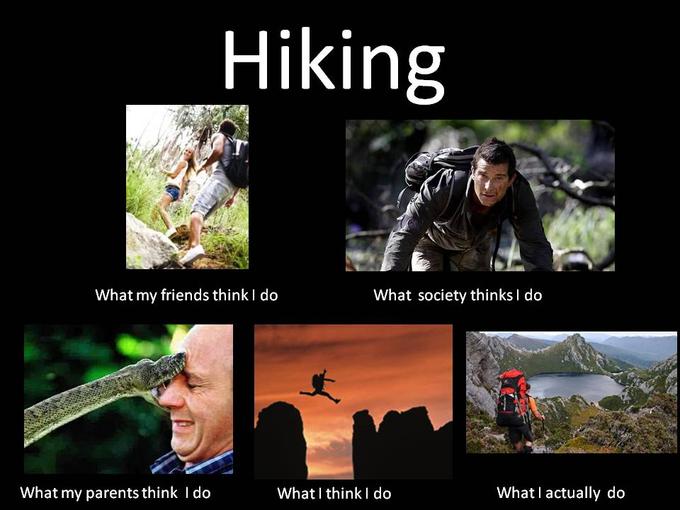
Why Hike Solo?
While hiking can be both a sociable and solo activity, this blog is focused mainly on solo hiking for women like me. Here I am!
But why?
Because if you’re waiting for someone else, you may never do it!
Hiking solo gives you skills for life
Hiking is easy enough to do alone with a little planning and prep work. Plus, England is, on the whole, a very safe country. I’ve certainly never had any problems, and since hiking is a national pastime, there’s a whole community out there of hikers like you. Learning the skills required to hike will serve you well in your normal, humdrum, everyday life and going it alone will mean you won’t always default to the role of follower.
This has huge potential benefits for your everyday life. Not only will it make you more confident in your abilities and problem-solving skills, but all those endorphins can work wonders for your self-esteem. Leading a meeting? No problem! Need a new job? Now you’ve got the motivation! And on top of all that, your body is becoming stronger and leaner. What’s not to love?
Hiking solo helps conservation
A large part of what I want to share and inspire in this blog is a deep love for our natural environments here in Britain. There are so many habitats in southwest England that are unique, from the rain-soaked Brecon Beacons of Wales to the not-so-barren plains of Dartmoor. Not only are these beautiful areas to enjoy, but they are also vital ecosystems for native British plants and wildlife. As a keen conservationist, I’m all about building love for our countryside and inspiring change for the better. Solo hiking will mean you notice your surroundings more, as you’ll be paying much closer attention.
Hiking opens up a whole new world for you, and I can’t wait for you to join me on this journey of self-discovery!
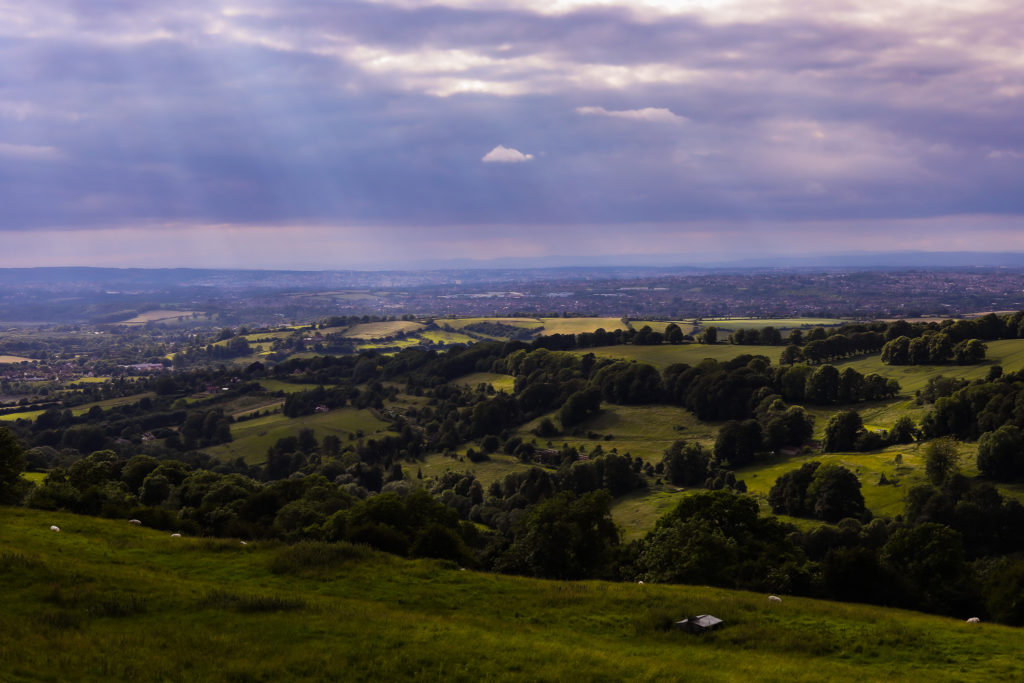
Hiking in the Southwest of England
In my humble and totally unbiased opinion, the southwest of the UK is the greatest of all the English areas. No doubt you’ve heard of our multitude of attractions down here:
- Bath – the prettiest city in the UK* (*my opinion, but come and see for yourself)
- Bristol – with the Downs and Leigh Woods National Nature Reserve
- Stonehenge – you’ve probably heard of it
- Avebury – you probably haven’t
- The Cotswolds – quintessential England
- Dartmoor – wide open SPACE and ponies
- Cornwall – gorgeous, even if you can’t understand the locals
- Wales – a whole other country right on our doorstep! With its own language, and mountains galore (ok fine, glorified hills), it’s one of my favourite places on the planet.
It’s a gorgeous part of the country and entirely responsible for me not being able to live anywhere flat (sorry Netherlands). It’s not home without hills!
Here are some other places and trails you might not have heard of that you’ll be able to discover on this blog:
- Chippenham & its surrounds
- Bath Skyline Walk – great views
- Biddestone – a quintessential English village
- Castle Combe – same as above, but a movie star in its own right
- Lacock – also a movie star
- Malmesbury – a town straight from the Middle Ages
- Stourhead – a gorgeous National Trust Property
- Wessex Way – explore the Kingdom of the West Saxons
- Cotswold Way – 102 miles of quintessential England
- Sarsen Trail – One of my favourite walks ever and all for the sake of Wiltshire Wildlife Trust. They even open up Salisbury Plain, usually closed for military purposes, which is definitely a treat. It’s a marathon you can choose to run or hike but you’ll need speed as well as stamina (or it gets dark!)
Most people you meet down here are very friendly. Bearing in mind that people hike for different reasons, you’ll usually get a friendly hello from fellow ramblers. If you don’t feel like that, no worries! There’s no judgement out here: it’s what you make of it.
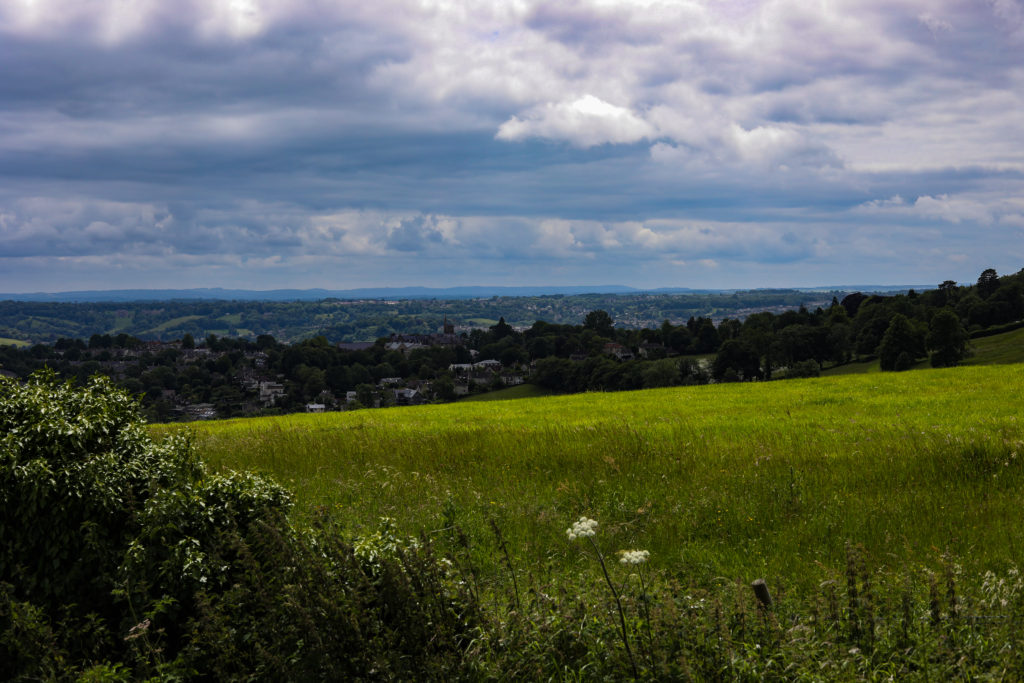
How Do You Hike Solo?
You put one foot in front of the other – whatever it takes!
Mind over matter
Hiking is mostly a mental exercise, though physicality does play a major role. To hike is to put mind over matter and get the job done. Yes, it can be tough, but it depends on what you want from it. For me, I love the mountains: as I mentioned earlier Wales is one of my favourite places in the world, yet these landscapes can be tough, even if you are prepared.
What gets me through is my love for these treks. If you believe you can, you will: If you believe you can’t, then you probably won’t. Learn to love it, or you’ll be conquered before you begin. Tough love aside, it’s easy to become an avid hiker. There are so many reasons to love exploring after all!
In terms of physical strength and stamina, this is easy to work on. Just go at your own pace and build it up slowly. Even for the most determined of us, harder hikes need training and preparation.
Clothing
Speaking of preparation, choosing what to wear can make the difference between a successful or unsuccessful hike. Layers are key. Wear less layers for warmer weather and more for cold or rainy weather. Here is a list of clothes I usually wear:
For warm weather:
- Hiking socks – it’s personal preference how you wear these, with or without a pair of ‘normal’ socks underneath. I usually go for the double pair, as it helps me with the boot fit. That and it’s just habit for me now!
- Sports bra
- Exercise top (preferably sweat wicking)
- Thin jacket (sweat wicking)
Additional clothes for cold weather:
- Jacket or fleece layer – instead of the thin jacket
- A buff – so much better and less annoying than a scarf – buffs are great! I have one my parents got me from their trip to America, so it’s also a great gift for hiking friends!
- Gloves – completely optional, and you may wish to opt for a waterproof pair. I tend to carry a pair of woolly fingerless gloves, since I’ve usually got my camera attached at the hip and I don’t want to keep pulling them off and on.
Clothes for rainy weather:
- A decent waterproof – I’m working on an article to help you buy the right products, so keep an eye out for it!
- Waterproof/rainproof trousers – I have a pair I bought back when I was working at Cotswold Outdoors during uni and they’re great! They can be on the more expensive side for a decent pair, but if you’ve got the money, then it’s a solid investment for these ‘ere parts!
- Waterproof over-trousers – not very sexy, but that’s not what hiking is about. If you’re caught out in a downpour, trust me when I say you’ll be glad to have them.
Footwear
There are so many choices out there these days, and in my upcoming article I’ll take you through the options. You really can’t go wrong with a supportive pair of hiking boots though, the ones with ankle support. I have a weak ankle from spraining it so many times, so I need that support, but preventing a rolled ankle in the first place should be high on your priority list!
Absolutely no trainers please! Walking boots are built with better grip by far and work much better to keep your feet dry. They’re much easier to clean too. Any other type of shoe is completely out of the question – I have seen high heels on Snowdon and just… no.
You’ll always need to wear in a new pair of hiking boots, so wear them around the house first to prevent some nasty blisters and to test the fit.
Snacks and sustenance
Keeping fuelled up and raring to go is key to beat the hanger (hungry anger. I know it’s not just me!) and complete a successful, happy hike. I recommend taking at least a small snack with you, just in case you run out of energy. For longer hikes, such as an all day hike, or if you’ll be hiking through a meal time, then prepare a picnic for yourself. Since you’ll be expending more energy than usual on a hike, you’ll need more calories. I don’t believe that anybody has to ‘earn’ their food, but I still enjoy a treat. Chocolate bars or breakfast bars regularly accompany me on my hikes.
Safety
Some sites and people don’t recommend hiking alone, but in the beautiful southwest of England, it’s pretty safe (with a few exceptions!) There’s enough countryside to get out and about and truly alone, though while you’re starting off, plan your trips around accessibility to help first. Mobile signal is generally fine, but if you’re still building up your abilities, knowing that there are houses, villages or even a well-travelled trail nearby can help build your confidence. The locals here are much friendlier than Londoners, trust me!
Exceptions include areas that I’ll cover in more depth in other articles, such as Dartmoor, Wales and Exmoor to name a few. These landscapes can quickly become dangerous if you’re new and unprepared. There’s no room for ego here: mother nature will always take her dues.
It might be a good idea as well for you to pack your own mini first aid kit – you can buy these in outdoors shops, or make your own. Perhaps just pop some plasters or blister plasters in just in case. I tend to pack hayfever tablets on a sunny day too.
The countryside code
You may be familiar with this, you may not be. Simply put, the countryside code is there to help people be respectful of the places they hike through. It includes things like closing gates after you, so farm animals don’t escape and wreak havoc.
The most important principle to remember is to leave no trace. Leave the countryside as you found it, or better yet, better than you found it, by picking up litter.
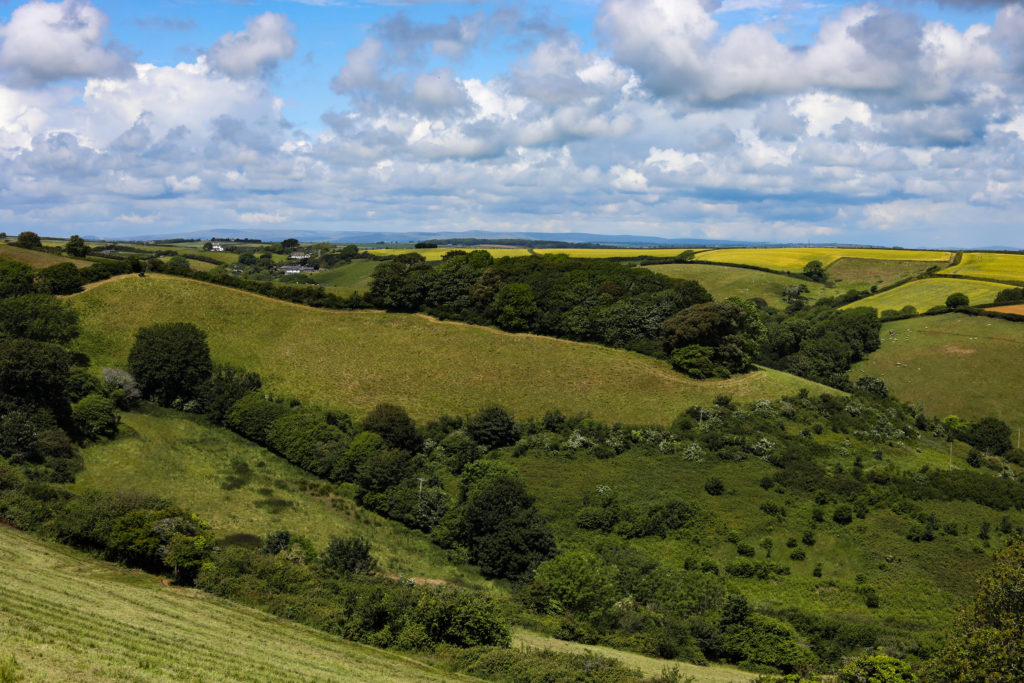
Where to Hike?
This blog is focused specifically on the southwest of England (if you hadn’t picked that up by now!) But where to begin? OS Explorer maps of course!
OS Explorer Maps for the win!
My advice to you is to use where you’re based as a starting point. Buy a map of your local area and plot out a route in relation to your skill and fitness level. If in doubt, google it! But a word of warning, don’t rely on google maps, as hiking trails generally aren’t on there, and if your phone runs out of battery it’s going to get tricky. If you’ve never used a map before, err on the side of caution and start with a short route on well-trodden trails. I’ll teach you how to use a map in another post – coming soon!
Consider your timescale
There are so many places in this part of the country to explore. Where to hike lies in whether you live in the southwest of England or are just visiting. (If you’re thinking of moving here, I highly recommend it!) If you live here, then you’ll have the luxury of going at your own place and discovering new things on your regular routes. On the other hand, if you’re travelling here for a long weekend perhaps, then you’ll be limited as to where you can get to and how long you have for a hike.
Do you have transport?
Something to consider is whether you have your own transport or will have to use the public systems. I am lucky enough to be based close to the countryside in Bath, and so haven’t had to use public transport yet, though it is definitely on my list for those harder to reach places! My parents also live nearby, so I have the luxury of a chauffeur occasionally (thanks Mum!) and this means I sometimes get company too 😊
A word on weather
Always check the weather forecast before you head out, whether you’re off to pastures new or a favourite trail. Here in the UK we don’t have to worry about extreme weather. That being said, if you’re not prepared you could find yourself a bit soggy and miserable at best, or downright freezing and lost at worst. I use the BBC weather app, which I find to be fairly reliable.
Tell someone
Most importantly tell someone where you’re going and when to start worrying if they don’t hear from you – you can never be too careful! Learn at least 1 number, so you can call from another phone if yours runs out of juice. Local pubs have wonderful, friendly staff to help you out, fill up your water bottle, or even serve you a celebratory pint!
If you’re a complete beginner, or still feeling a little lost, check out the rest of my website for handy guides and tips. I’m constantly updating my site, so check back regularly if you can’t find what you’re after or get in touch to tell me what you’d like to see.
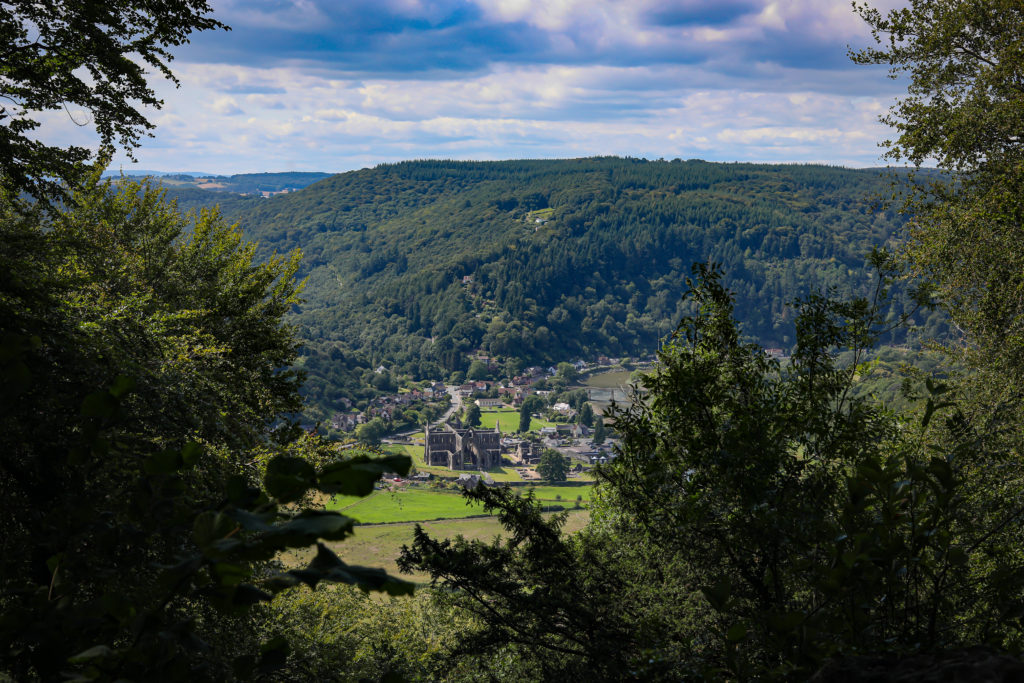
What You Need to Hike
I have an updated gear guide on the way, but what are the things that even the seasoned pros sometimes overlook?
I tend to travel on my shorter hikes with my trusty professional camera bag, which limits the number of things I can carry (always a good thing) but fits in a lot more than you’d think. I’d recommend a rucksack that fits in a water bottle, a map, some snacks, your phone and a portable charger. I’ve now got a small blue 11L rucksack, which I bought for my travels around South America (www.collectingcontinents.com) and absolutely love! I take either my rucksack or my camera bag on shorter hikes (my camera slows me down immensely), or both for longer hikes.
Here are some things you will need to consider:
- Backpack – measured in litres and depends on your purpose
- Poles – depending on the terrain, hiking poles help to distribute the load and act as shock absorbers to save your poor old knees
- OS Explorer Map – possibly a waterproof one, or a separate rain cover for it
- Water – never enough
- Sun cream – UV rays are everywhere, at all times. Play it safe and save your skin.
- Sunglasses – even on cloudy days you may need them, especially if you’re out walking near water. Those big puffy clouds act as huge diffusers and spread the light out, not helpful for your sensitive corneas.
- Waterproofs – coat and potentially trousers, this is England after all!
- Snacks – and maybe a packed lunch depending on the length and difficulty of your hike
- Phone – fully charged, and an extra charger if you’re going off into the back of beyond
- Cash – I don’t tend to take my purse hiking since it’s rather huge and I’m not heading off on an impromptu shopping trip. I do take some cash with me though, in case I come across a pub or an emergency, so I can pay for a taxi home if I need to. I sometimes pop my card in too since I’m a millennial and don’t fully trust old-fashioned cash (what if I don’t have enough?) Just remember to pop it back in your purse when you’re done!
- Tissues – What can I say? When it’s chilly especially I need a packet on me at all times! Also, hayfever…
Optional
- Camera – I’m a photographer and filmmaker so this is usually a must
- Thermos – adds extra weight, so I tend to leave it, but if you’re headed off in your car, or perhaps on public transport take a full one to save some money. It’s great for a treat or to warm you up after a cold or soggy trek!
Most of these are suggested items, and once you get used to getting out and about, you’ll inevitably come up with your own list of must-haves. Generally, if I want to keep it short, sweet and light, I only carry tissues, and small bottle of water that fits in my pocket. Sometimes I add a sweet treat to keep me going, gloves if it’s cold and a buff. If it’s lovely weather or a longer hike to pastures new I take my camera bag with me and pop in some homemade sandwiches and snacks to save money. At the end of the day what you take is up to you.

Hiking is an investment
Hiking can be done with what you’ve got already, and you can make your own food and snacks to save money. Initial investments, if chosen wisely, can last you for years, so while it may seem expensive to splash out on some hiking boots, they’ll prove their worth time and again. This really is one of the cheapest activities you can do, and getting out and about in nature will help to minimise any stress you might be experiencing. It may not solve your problems, but by giving yourself headspace to think, you may come up with some creative solutions.
My Last-Minute Hiking Top Tips:
- Always check the weather – you can never be too prepared.
- Invest in an OS Explorer Map of the area you’re going to. These maps are essential and you’ll soon get the hang of it. I’m here to help you on your hiking journey, so look out for an article soon on how to read a map.
- Tell someone where you’re going – especially if you’re heading off into the middle of nowhere
- Make sure your phone is charged or invest in a portable charger. Having both is best!
- Take some cash with you – it depends on my mood as to whether I take cash or card, but I tend to end up popping both in my bag. Useful for an emergency, like taking a taxi if you’re caught out in the dark or if you end up in a pub (for me it’s always the latter!)
- If you’re just starting out hiking for the first time, bring a friend along if you’d like.
- Alternatively, if you want to start hiking solo immediately, start from home. Building up a comprehensive mind-map of your local area will mean you can head off whenever you wish.
Alrighty! I’m excited to have you here on this journey with me! Take a look at my other articles if you’re not quite ready to get out there and take the leap. If you are, then my area guides are coming soon to help you narrow down your hiking choices and to help you find out more about these incredible places.
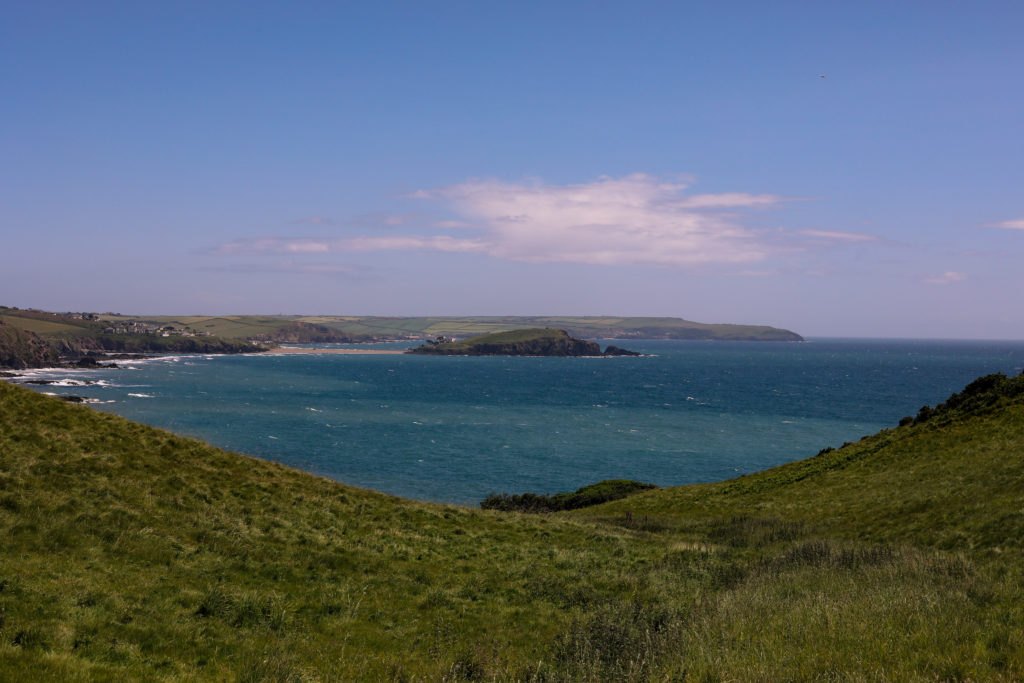
I’d love to see where you go, so send me your favourite photo of your hike, and tell me where you went!
From me to you, until next time tribe!
Jenni